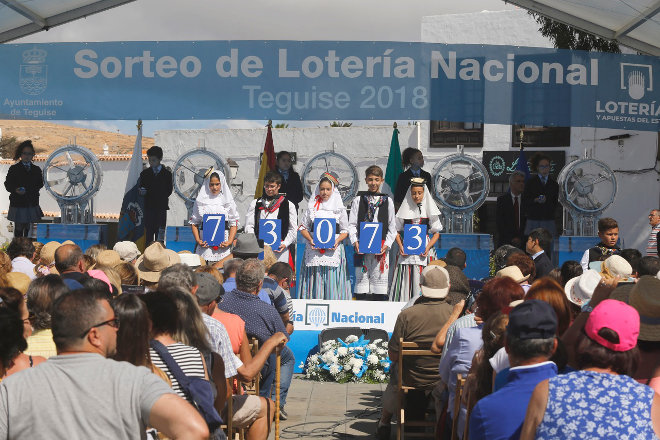In the United States, a South Carolina ticket holder recently claimed the biggest lottery win in the history of the country, and with the lottery company confirming that there is one winner of the US$1.6 billion prize, which is about 1.2 billion pounds, all for just a two-dollar stake. Admittedly, the odds of winning were not great at one in more than 300 million, but maybe it was worth taking the risk of loss in this particular case.
In Spain and the Canary Islands, we are approaching that time of the year when tickets for the annual Christmas Lottery are on sale. This particular lottery, which is more commonly known as ‘El Gordo’ (The Big/Fat One) is very important in Spain, and towns and villages grind to a halt during the morning of the 22nd December when children ‘sing’ the lottery numbers in the usual tuneless monotone, which is traditional of the event.
The roll call of numbers seems to go on for hours, and the doleful dirge stays with listeners for much of the day. It is one of those sounds, rather like an annoying advertising jingle, that is hard to forget. In Spain, the Christmas Lottery is an essential part of Christmas and is, for many, when Christmas celebrations truly begin.
There was also another special lottery this year, which was to celebrate Spain’s National Day on 12 October (‘Especial Día de la Hispanidad de la Loterería Nacional). This lottery, offered 84 million euros in prizes, which meant even more to Canary Islanders this year, and particularly those living in, as well as those who have a particular connection to, the island of Lanzarote.
The Plaza de Los Leones de Teguise in Lanzarote was the scene for this year’s prize draw. This special issue consisted of 100,000 tickets, divided into tickets of 120 euros. Each ticket was sub divided into tickets costing 12 euros each.
Teguise was the previous capital of Lanzarote for 450 years until 1852, when it was supplanted by the ‘modern upstart’ Arrecife. Teguise remains an important cultural and tourist centre with its streets brimming with convents, squares and palaces. The town was named after the last Princess of the native, pre-Spanish inhabitants, called Guanches, and is the oldest Spanish settlement in the entire Canary Islands, dating back to 1402.
This beautiful town witnessed many attacks by pirates, as well as the Moors and Christians, which reached its climax in 1618, with an invasion of 5000 Algerian buccaneers who overran the town, which led to a violent massacre.
In the 1980s, great efforts were made to restore Teguise to its former glory and to recognise its status as one of the oldest towns in the Canary Islands. As such, the town was declared to be an important architectural and historic site, since it is where much of Lanzarote’s vibrant history has been written.
Today, many locals and tourists visit the town, particularly during the morning hours, but the best time to see this architectural treasure is when they have gone home for lunch. Once the hustle and bustle of bargain hunters have disappeared, deserted streets create a unique flavour of Teguise’s prosperous, yet more troublesome past. Thankfully, few organised coach tours show much interest in the town, and the lack of hotels helps to ensure that Teguise remains frozen in time.
The decision to highlight Lanzarote in this way was an enlightened one designed to mark and celebrate the 600th anniversary of a very special town. Hopefully, there were many happy lottery prize winners in Lanzarote this year; if not, there is always another lottery just around the corner.
If you enjoyed this article, take a look at my websites: http://barriemahoney.com and http://thecanaryislander.com or read my latest book, ‘Living in Spain and the Canary Islands’ (ISBN: 9780995602724). Available in paperback, as well as Kindle editions.
Join me on Facebook: @barrie.mahoney
© Barrie Mahoney





